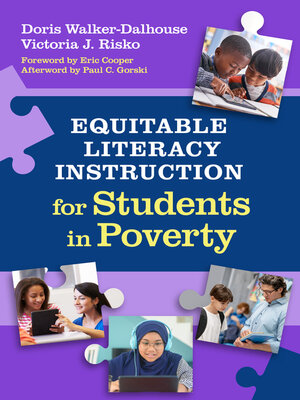Equitable Literacy Instruction for Students in Poverty
ebook ∣ Language and Literacy
By Doris Walker-Dalhouse

Sign up to save your library
With an OverDrive account, you can save your favorite libraries for at-a-glance information about availability. Find out more about OverDrive accounts.
Find this title in Libby, the library reading app by OverDrive.



Search for a digital library with this title
Title found at these libraries:
| Library Name | Distance |
|---|---|
| Loading... |
Differences in performance between students of poverty and more advantaged students are reflective of an opportunity gap, as opposed to a gap in student ability. This book argues that significant attention must be given to eliminating the barriers that produce educational inequities in student achievement. Walker-Dalhouse and Risko focus on disparities in literacy achievement that might be attributed to color-blind practices, deficit mindsets, low expectations, or context-neutral practices. Situating literacy learning within a comprehensive view of literacy development, they provide a set of instructional practices that will best support students living in poverty. Specifically, vignettes from kindergarten through middle school classrooms are used to demonstrate practices that address critical areas of the reading process; are responsive to students' racial, ethnic, cultural, gender, and linguistic histories and assets; attend to students' strengths and needs; and go beyond the impact of short-term testing to support optimal and sustainable learning. Educators and school leaders can use this resource to transform schools into nurturing and vibrant communities that are committed to change, equity, and diversity.
Book Features:
"The authors correct the deficit misperceptions by showing how students experiencing poverty are the targets, not the causes, of educational disparities... What a different world schools would be if we each embraced these lessons." –From the Afterword by Paul C. Gorski, founder, Equity Literacy Institute







